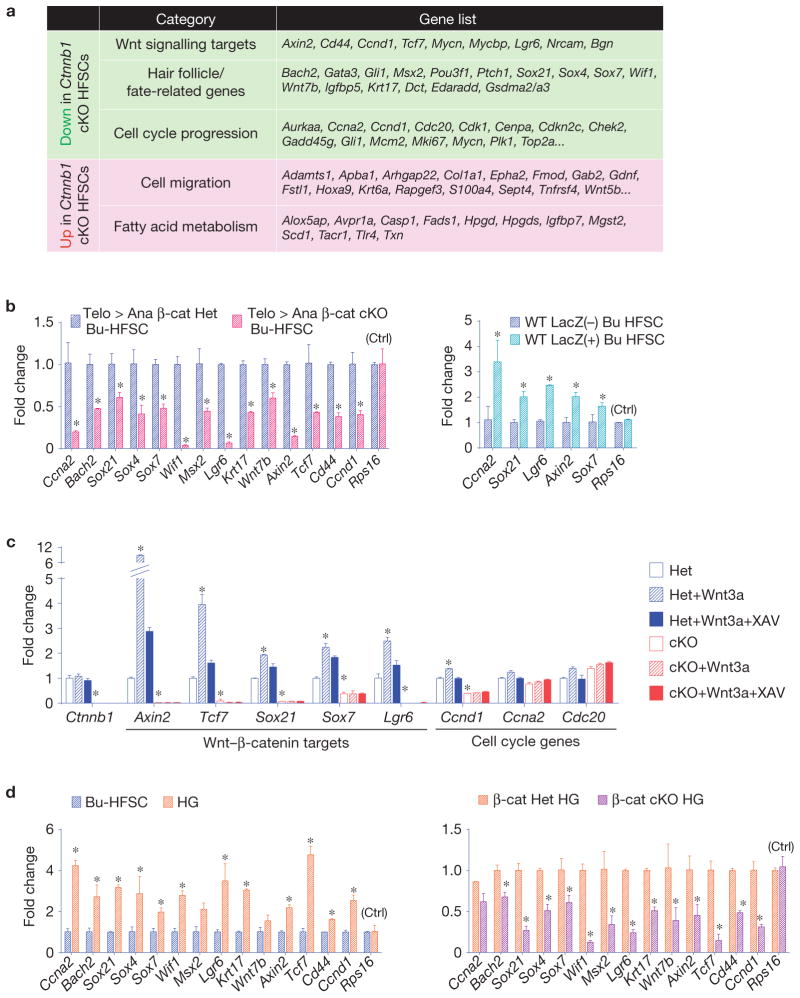Figure 5.
β-catenin influences expression of Wnt-responsive genes in bulge HFSCs that are first activated in the hair germ at anagen onset. (a) Comparisons of RNA-seq data sets reveal a cohort of genes whose expression is sensitive to the presence of β-catenin. Gene ontology categories for genes downregulated in β-cat cKO Bu-HFSCs are highlighted with a green background and upregulated genes with a red background. Representative genes for each category are shown. (b) qPCR validates the β-catenin responsiveness of a group of genes that are downregulated in β-cat cKO Bu-HFSCs (left); note that a number of these are conversely upregulated in Wnt-responsive Axin2–LacZ(+) Bu-HFSCs (right). Values are normalized to β-cat Het or LacZ(−) Bu-HFSC mRNAs. Rps16, mRNA control. (c) β-catenin target genes show Wnt-responsiveness in culture. Cultured control and β-cat cKO Bu-HFSCs were treated with recombinant Wnt3a protein and/or Wnt inhibitor, XAV939 (XAV), for 6 h, and their mRNAs were then collected for qPCR analysis. Note that although the levels of hair follicle fate genes in control (Het) Bu-HFSCs were elevated by Wnt3a, they show no Wnt-responsiveness in β-cat cKO (cKO) Bu-HFSCs. (d) A cohort of genes that are preferentially upregulated in hair germ at anagen onset (left) are downregulated in this compartment when β-catenin is lost (right). Note that many of these genes are also differentially sensitive to Wnt signalling in the bulge (b,c). Values are normalized to Bu-HFSC or β-cat Het hair germ mRNAs. Data in b–d are reported as average+ s.d. n = 3; *P < 0.05. Error bars for qPCR calculated from technical triplicates. Similar results were reproduced in 3 (b), 2 (c), and 4 (d) independent experiments.

